GM1 gangliosidosis is a rare, genetically inherited lysosomal storage disease. It primarily affects children, bringing about life-limiting neurological and developmental debilitations, among others. Read the full article on GM1 gangliosidosis here.
Onset of GM1 gangliosidosis can take place during the first year of life up until a person is in early adulthood, depending on the subtype. Symptoms of the disease can present in a myriad of ways with each subtype. The most extreme and severe symptoms occur with the infantile form of the disease, and the least severe symptoms occur with adult onset. Severity correlates to activity of the beta-galactosidase enzyme. Those with more beta-galactosidase, who have later onset types of the disease, experience subsequently less severe, but no less life limiting symptoms of the disease.
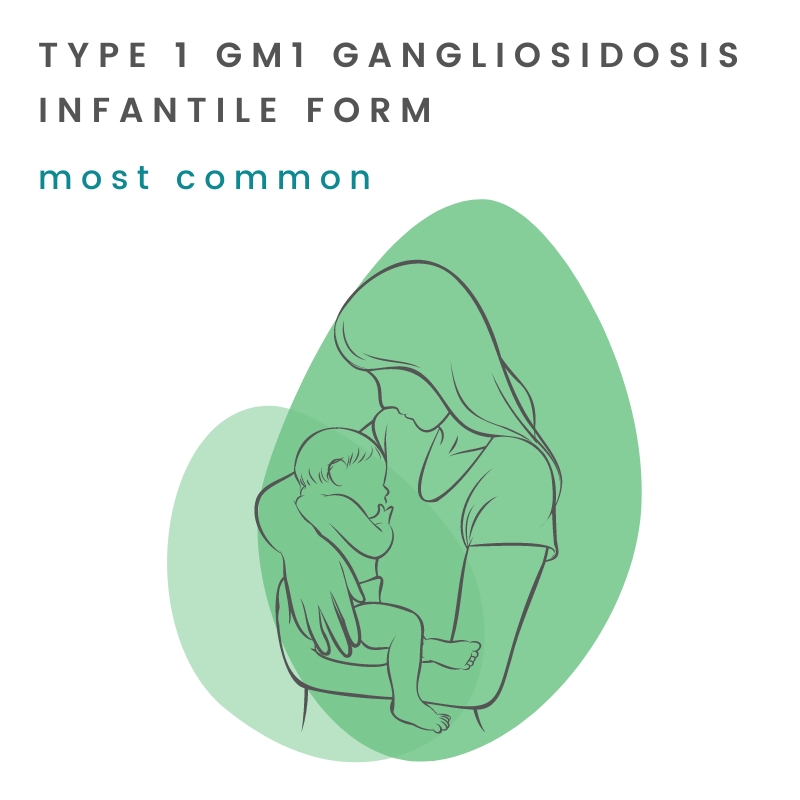
Type 1 – Infantile GM1 Gangliosidosis
Type 1 or infantile GM1 gangliosidosis is the most frequent and severe form of the disease. Onset of observable symptoms for type 1 occurs by the age of six months, and may occur in utero with the development of non-immune hydrops fetalis, which is a condition where excessive fluid develops in the amniotic fluid and within the organs of the developing fetus. The lifespan for patients with type 1 for most patients does not exceed three years.
Type 1 GM1 Gangliosidosis Symptoms
- Severe hypotonia by six months of age
- Enlarged spleen, liver
- Enlarged head
- Inability to sit, roll
- Loss of head control
- Macular cherry-red spots
- Nystagmus
- Heart failure, cardiomyopathy
- Dystonia
- Skeletal abnormalities
- Coarse facial features
- Hearing impairment
- Breathing difficulties
- In utero development non immune hydrops fetalis
- No new developmental milestones typically occur after 3-6 months
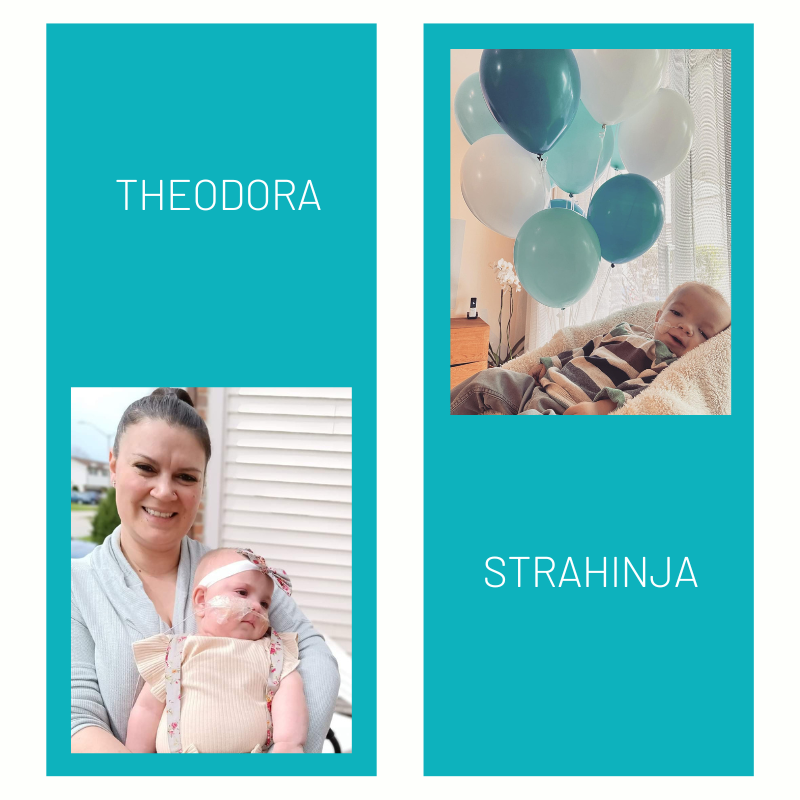
References:
- https://rarediseases.info.nih.gov/diseases/6479/disease
- https://www.orpha.net/consor/cgi-bin/OC_Exp.php?lng=en&Expert=79255
- https://www.omim.org/entry/230500
“My biggest fear is that [our son] will not have a long life and that in the meantime he will lose all of the abilities he has now, basic abilities like eating and motor skills. I worry about everything that can happen with the disease, including seizures and loss of all movement.”
Abby, mother of a son living with Type 1, infantile GM1
Type 2 GM1 Gangliosidosis
Type 2 GM1 gangliosidosis, or the late-infantile/juvenile form of the disease, occurs less frequently than infantile type 1. In type 2, children develop normally until onset of symptoms, usually between seven months and three years of age. The clinical symptoms of type 2 GM1 that are readily observable are of intermediate severity. Abnormal enlargement of the spleen and liver may be absent in children with type 2, and facial coarsening typically develops and progresses over time. Life expectancy ranges between early and late adolescence, and sometimes into early adulthood.
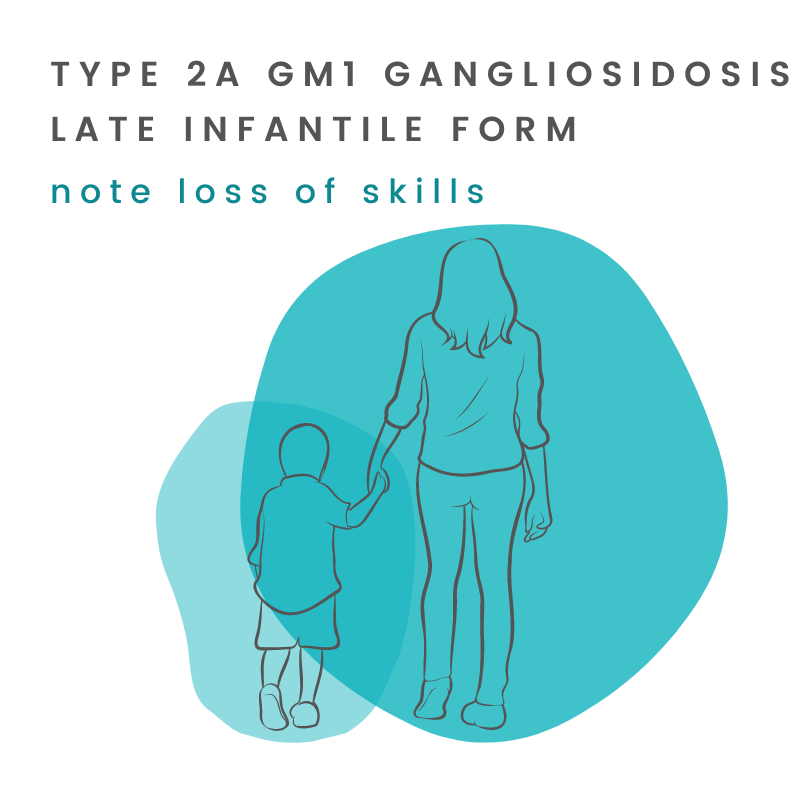
Subtype 2a – Late-infantile GM1 Gangliosidosis
Children with the late-infantile form of GM1 gangliosidosis have an earlier onset of symptoms, usually noted around 1 year of age. Those with this type have a more rapidly progressing disease than those with the juvenile (2b) type. Children with the late-infantile (2a) disease usually peak developmentally between 12 – 15 months of age, and they lose their ability to ambulate earlier than children with juvenile (2b) GM1. While survival is more variable in type 2 GM1, most children with type late-infantile (2a) only survive to 5-10 years of age, usually a shorter lifespan than children with juvenile (2b) disease.
Subtype 2b – Juvenile GM1 Gangliosodosis
Children with the juvenile (type 2b) form of GM1 gangliosidosis experience slightly later onset of symptoms than those with the infantile (2a) type, usually sometime after 2 years of age. Juvenile (2b) GM1 gangliosidosis presents with a more attenuated progression than late-infantile (2a) GM1, with regression and symptoms taking place at later ages and over longer spans of time. Type 2b is associated with variable survival, with estimated lifespans into the second or third decade.
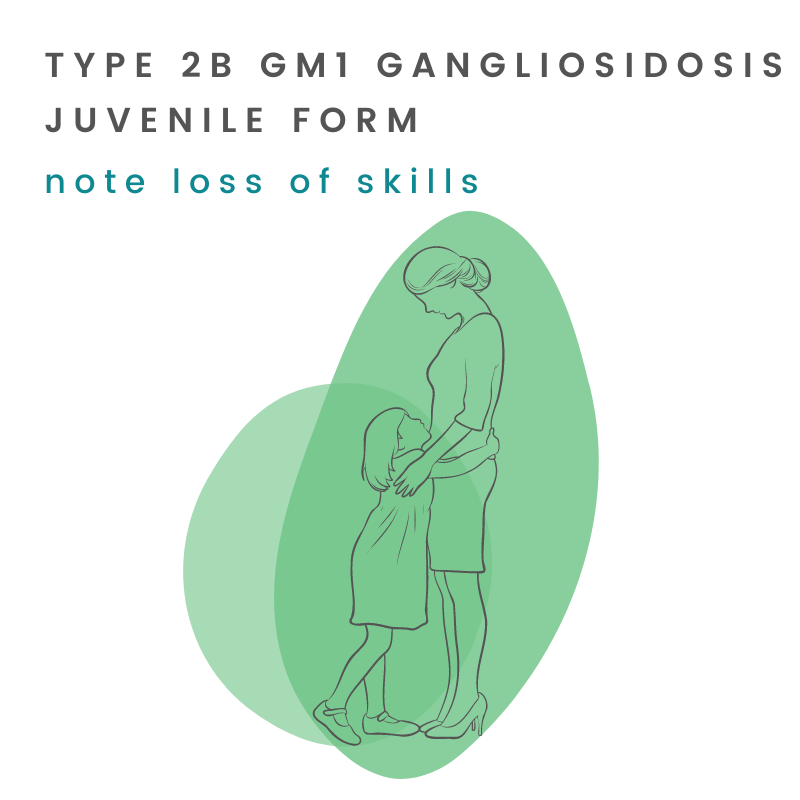
Type 2a and 2b Symptoms
- Hypotonia, muscle weakness
- Loss of speech, slurred speech
- Impaired eyesight, strabismus, nystagmus
- Clumsiness, falling, lack of coordination
- Loss of fine and gross motor skills
- Cognitive impairment, intellectual disability
- Cerebral atrophy
- Gait disturbance, ataxia
- Seizures
- Lethargy
- Scoliosis, flattened vertebrae
- Dystonia
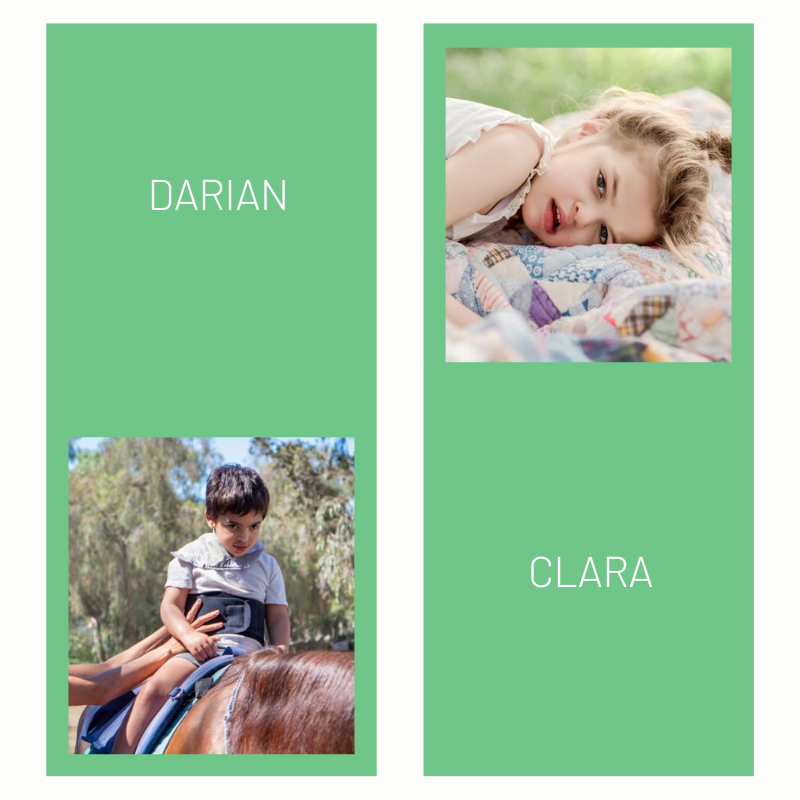

References:
- https://rarediseases.info.nih.gov/diseases/10126/gm1-gangliosidosis-type-2
- https://www.orpha.net/consor/cgi-bin/OC_Exp.php?lng=EN&Expert=79256
- https://www.omim.org/entry/230600
- https://link.springer.com/article/10.1007/s00439-003-0930-8
“Early on in her life, she was able to walk a bit on her own. She could move around and cruise around the house, around furniture. …Over the course of a few days, she just stopped walking abruptly.”
Matt, father of a five-year-old daughter living with Type 2A, late infantile GM1
“My daughter’s not able to tell me when she’s in pain, when she is hurting. I just have to guess. … I can just see her face. Just guessing what’s going on in her body.“
Ruth, mother of 20-year-old daughter living with Type 2B, juvenile GM1
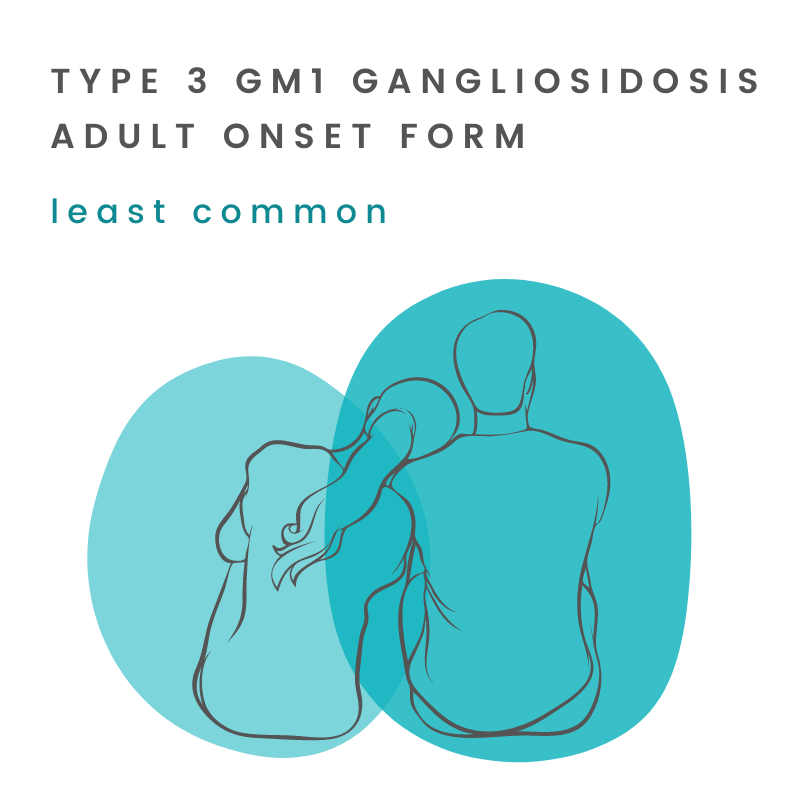
Type 3 – Adult-onset GM1 Gangliosidosis
Type 3 is the rarest form of GM1 gangliosidosis. The age of onset for type 3 has been reported to vary widely and can occur anywhere from age 3 to 30, but typically onset of notable symptoms occurs sometime in adulthood. Life expectancy can extend well into adult life.
In this chronic, adult form of the disease, the symptoms may be more mild compared to types 1 and 2 and show extreme clinical variability between patients. There is an inverse correlation between disease severity and residual enzyme activity. The adult-onset form of GM1 is more frequent in the Japanese population.
Type 3 Symptoms
- Dystonia
- Speech disturbance
- Imbalance; gait disorders
- Ataxia
- Uncoordinated movements
- Speech problems
- Visual problems
- Vertigo
- Slowly progressive dementia
- Intellectual degradation
- Skeletal dysplasias that can include spine deformities
- Skeletal muscle atrophy
- Most reported cases are in patients of Japanese origin
Read about people with GM1 type 3

References:
- https://rarediseases.info.nih.gov/diseases/2431/gm1-gangliosidosis-type-3
- https://www.orpha.net/consor/cgi-bin/OC_Exp.php?lng=EN&Expert=79257
- https://www.omim.org/entry/230650
- Suzuki et al., 2001
“She is aware of how GM1 is taking over her body and she can do fewer and fewer things, she still walks but it is agony to think how much time is left, how much time is left to listen to that thread of voice, or how much time is left to use your hands.”
María José, mother of a 20-year-old daughter living with Type 3, adult onset GM1
Help us find effective treatments and therapies so those living with GM1 can live long full lives
Donate to Cure GM1
